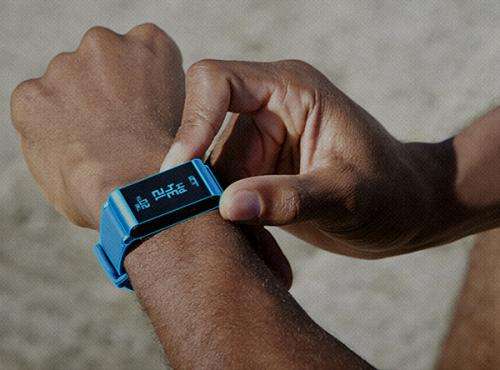Review: Pulse O2 activity tracker doesn't quicken my pulse

Wearable devices may be the next big thing in consumer electronics. But it's still not clear how they'll work, what they'll look like or even what they'll do.
One potential "killer app" for the devices is monitoring health and fitness. Accordingly, a growing number of companies have developed wearable "activity trackers" that can track things such as steps taken and distance walked.
Among the early activity trackers is Pulse O2 from France-based Withings. Released this spring, Pulse O2 is something like a souped-up pedometer. About the size of a USB drive, it can measure steps and monitor pulse rate with a sensor in its back.
The device is a follow-up on the Pulse, which Withings released last year. Unlike that device, which you could attach to your belt, the Pulse O2 comes with a wristband that allows users to wear it as a watch. And it ships with the ability to read users' blood oxygen level with the same sensor used to read their pulse.
Although strapping it to your wrist gives the Pulse O2 the look and feel of a smartwatch, it's clearly a fitness-specific device. You can use it to check the time or see how far you've walked, but it can't run apps, so you can't use it to read a text message or fast forward to the next song on your playlist.
That said, the device offers fitness fanatics a nice range of information. It displays how many steps you've taken, how far you've gone, how many calories you've burned and total changes in elevation. By swiping across the screen, you can view each one of those data points from your previous days' activities. You can see even more detailed information in the Pulse O2's accompanying smartphone apps.
The Pulse O2 will also keep track of your sleep cycles, if you wear the device and manually start the sleep tracking mode each night.
One of the advantages of the Pulse O2 over similar fitness devices is that it is designed to be flexible in how it's worn. It's a small rounded rectangular piece that can be fitted not only into a wristband, but also affixed to your belt or clothes with an included case that has a clip on the back. You can also easily slip the device, without case, into your pocket. It's so light weight - less than a third of an ounce - that you won't even notice it.
Unlike some other wearable devices I've tested, the Pulse O2 offers extra-long battery life. Even though it was only partially charged when I first started wearing it, I used it for four days without needing to recharge it. Withings says it will go two weeks on a full charge, and that you only need to plug it in for an hour to replenish its battery.
Although it works in conjunction with a smartphone, you don't need to bring your smartphone with you if you are using the Pulse O2. Instead, it will sync whatever data it's collected the next time it's connected with your phone via Bluetooth.
Unfortunately, the Pulse O2, like many of the early wearable products, has plenty of drawbacks. One way it extends its battery life is that its screen only turns on when you press its wake button. That's OK if the device is in your pocket or clipped to your belt. It's not so great if you are wearing it like a watch. I'd like to know what time it is-or how far I've walked-by just glancing at my wrist, not by having to go the extra step to push a button, too.
Another way it conserves energy is by having a dim, low-resolution, monochrome screen that's impossible to read in bright outdoor light.
The device's design can also make it awkward to use. If you want to check your pulse, you have to first remove the device from your wristband or belt clip, because both cases cover up the sensor. That can be easier said than done in the middle of a workout.
What's more, its interface is poorly adapted for wearing the device on your wrist. The wristband orients the device in portrait mode. But by default, all of the data screens are displayed in landscape mode and the only one you can view in portrait mode is the clock screen. To read the other screens, you have to hold your wrist at something approaching a 90-degree angle to the ground.
I also had questions about the quality of the Pulse O2. After only a few days use, the touch screen on my review unit started to flake out. It wouldn't turn on the sleep mode when I tapped the on-screen button for it and would no longer display my past days' activities when I swiped across the screen.
Making a device that's targeted at fitness buffs is probably a smart way to break into the wearable market. But if the Pulse O2 is any indication, such devices still need a lot of refining before they're ready to gain mass appeal.
WITHINGS PULSE O2 WEARABLE ACTIVITY TRACKER:
-Likes: Lightweight; included cases allow users to wear as watch or attached to belt or clothes; offers a range of fitness-information at a glance; built-in sensor can measure pulse rate and blood oxygen level.
-Dislikes: Questionable build quality; sensor placement makes it awkward to use; dim screen difficult to see in bright light; interface poorly fitted to use on wrist.
-Price: $120
-Web: withings.com
©2014 San Jose Mercury News
Distributed by MCT Information Services




















